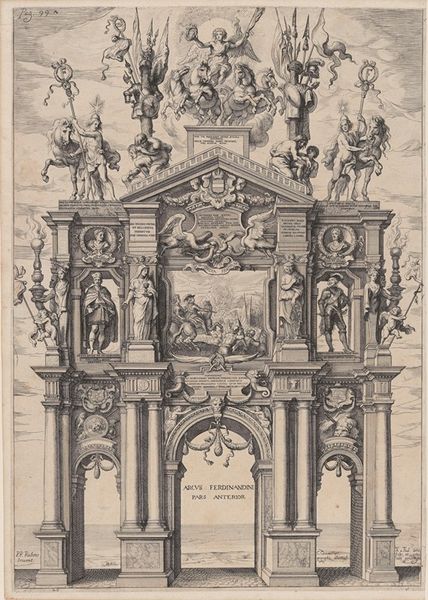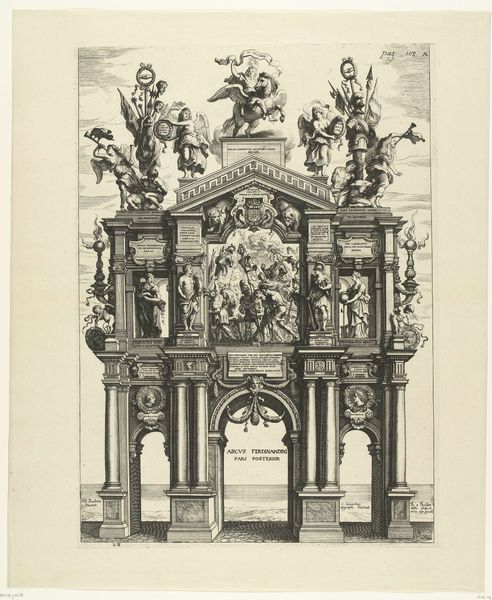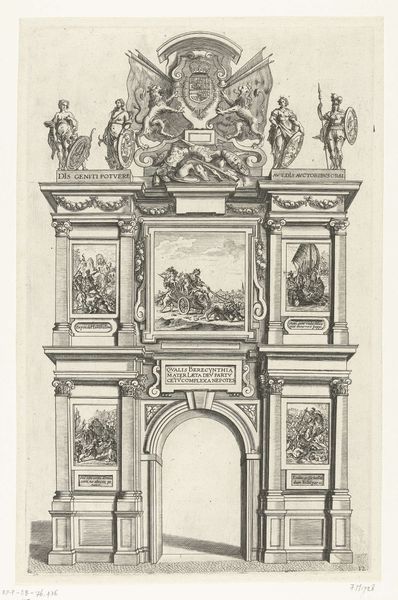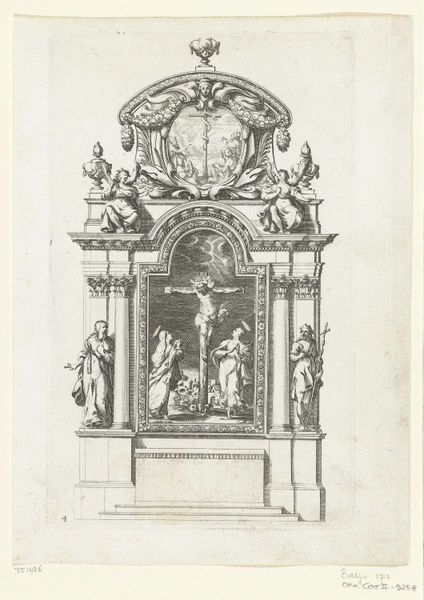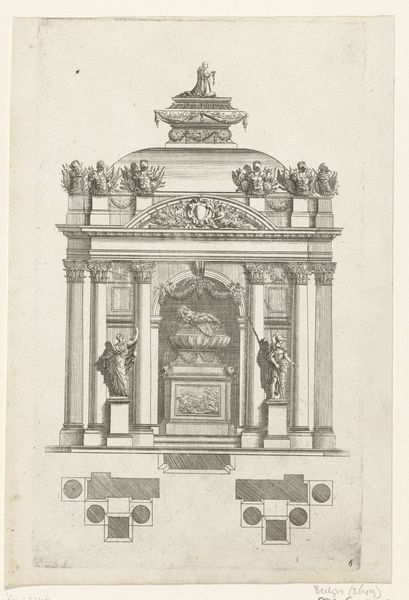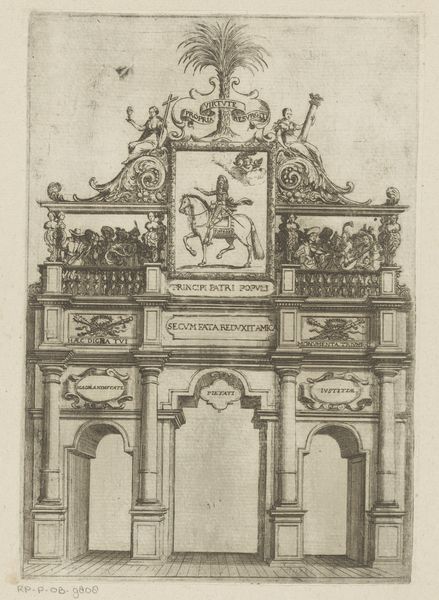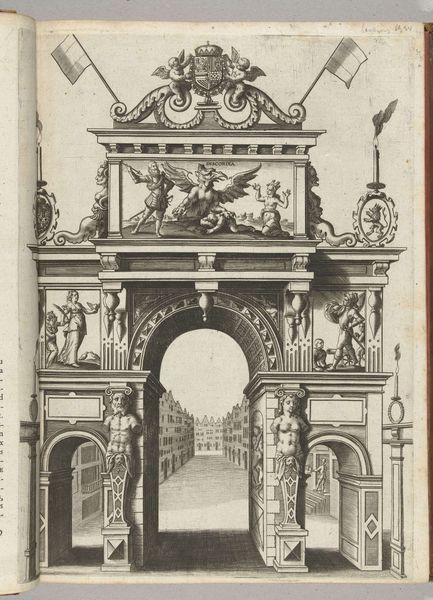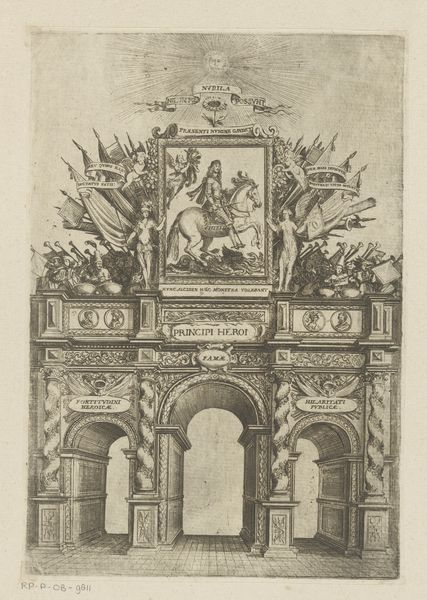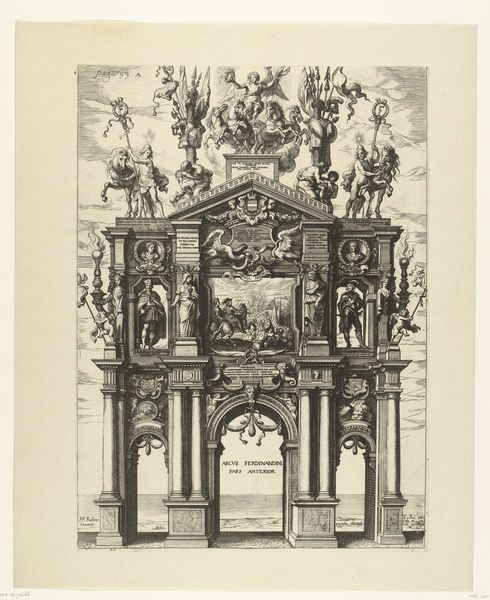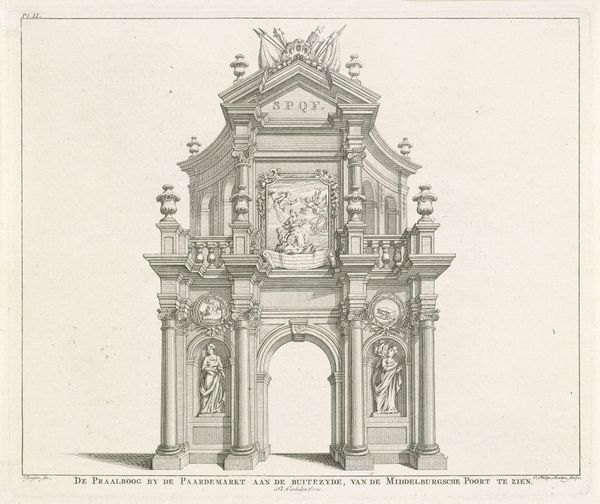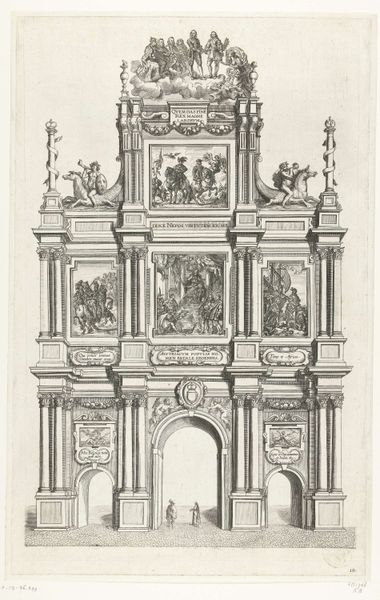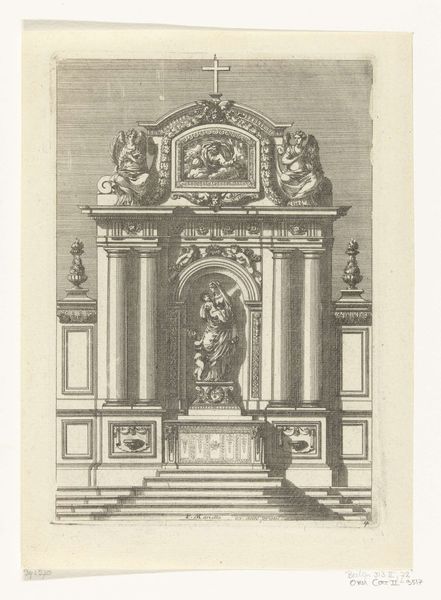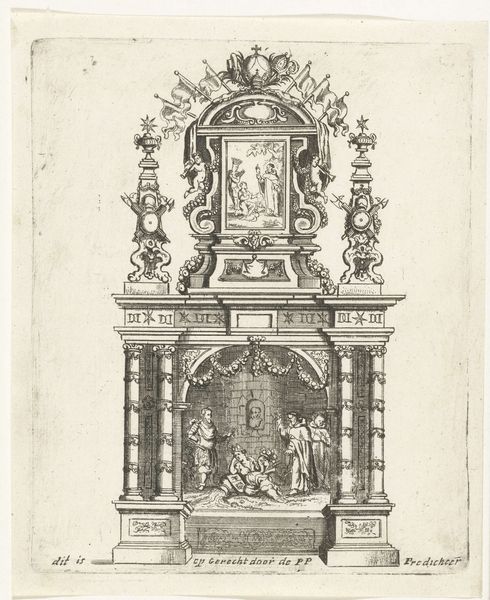
Triomfpoort bij het huwelijk van Karel II van Spanje met Maria Anna van Beieren, 1690 1690
0:00
0:00
print, relief, engraving, architecture
#
portrait
#
baroque
# print
#
relief
#
figuration
#
form
#
geometric
#
line
#
cityscape
#
history-painting
#
academic-art
#
engraving
#
architecture
Dimensions: height 477 mm, width 296 mm
Copyright: Rijks Museum: Open Domain
Curator: This image plunges us into the spectacle of 17th-century celebrations! The black-and-white engraving teems with so many tiny details... it's almost overwhelming, in a grandiose, Baroque way. Editor: Indeed! Let's contextualize what we're seeing. What we have here is “Triumphal Arch for the Marriage of Charles II of Spain to Maria Anna of Neuburg," created around 1690 by Richard van Orley. It’s a print, etching, and engraving, showcasing temporary architecture constructed for the royal wedding celebrations. Curator: A temporary structure, rendered so meticulously! One gets a real sense of its ambition. The figures look theatrical, with lots of grand gestures. Almost like they're putting on a show for us, as much as for the King. Editor: Precisely. And isn't the staging significant? Positioned within these temporary arches and on upper story balconies are depictions of royal union presented for the viewing pleasure and acceptance by all members of the public in that given space. Its display signifies a performative moment in a particular place and time meant to emphasize social hierarchies. Curator: Yes! It reinforces social hierarchy visually; those who were powerful enough to be "on display" within those grand spaces versus those watching them down below at street level. And the sheer ornamentation reinforces the impression of absolute authority. Those sculpted elements are not merely decorations—they’re statements. Editor: Statements laden with symbolism. Consider those figures: Are they symbolic of the kingdom? Religious icons? The figures function within an academic framework by depicting recognizable historical, mythological, and Biblical figures. Do you notice any political strategy related to national identity embedded in those sculptures? Curator: Fascinating. The entire construction reads as propaganda and even cultural projection. I am left thinking that triumphal arches act like filters or a prism: both bending, as well as reflecting the ideals and power structures of their era. The piece compels one to consider whether these constructed images reinforced existing paradigms or had a long-term cultural influence. Editor: Absolutely, it becomes imperative to analyze it in light of today's debates about power, identity, and visual representation within shared community spaces. Curator: Indeed, by acknowledging the biases ingrained into artistic expressions like Richard van Orley's magnificent display of dynastic ambition, the viewers now gain deeper insight.
Comments
No comments
Be the first to comment and join the conversation on the ultimate creative platform.
